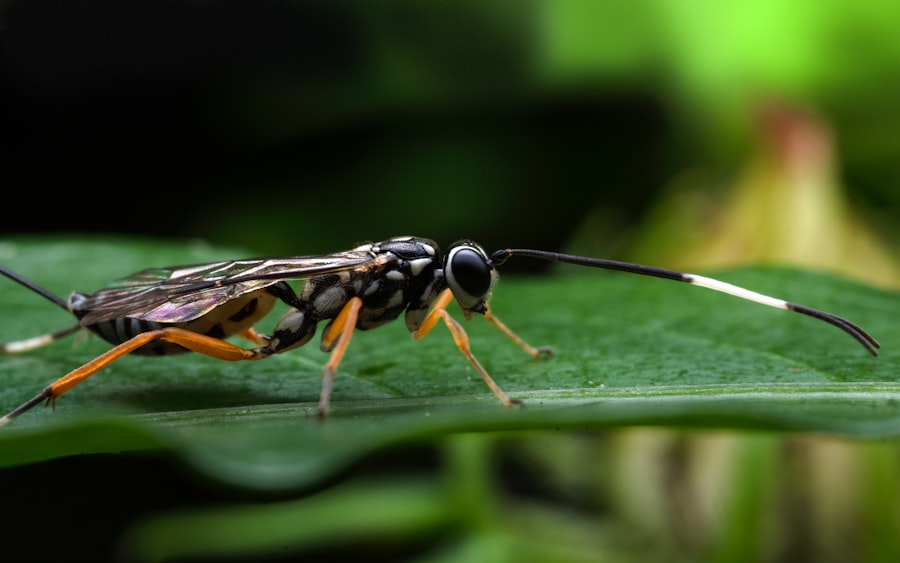Parasites are fascinating yet often terrifying organisms that rely on other living beings for their survival. They can be found in various forms, from microscopic protozoa to larger worms, and they inhabit a wide range of environments. As you delve into the world of parasites, you will discover that they have evolved unique strategies to exploit their hosts, often leading to significant health issues for humans and animals alike.
Understanding these organisms is crucial, as they pose a serious threat to public health and can lead to debilitating diseases. The impact of parasites on human health is profound. They can cause a myriad of symptoms, ranging from mild discomfort to life-threatening conditions.
In many cases, the symptoms may go unnoticed until the infection has progressed significantly. This silent nature of parasitic infections makes them particularly dangerous, as they can spread rapidly and affect large populations before being detected. By exploring the various types of parasites and the diseases they cause, you can gain a deeper appreciation for the complexities of these organisms and the challenges they present in the field of medicine.
Key Takeaways
- Parasites are organisms that live on or inside another organism and benefit at the host’s expense.
- Malaria is a deadly disease caused by the Plasmodium parasite and transmitted through the bite of infected mosquitoes.
- Toxoplasmosis is a common parasitic infection that can be dangerous, especially for pregnant women and individuals with weakened immune systems.
- Guinea Worm Disease causes painful blisters and ulcers as the worm emerges from the body, often affecting the lower limbs.
- Leishmaniasis is a flesh-eating parasite transmitted through the bite of infected sandflies, causing skin sores and potentially disfiguring the affected area.
Malaria: The Silent Killer
Malaria is one of the most notorious parasitic diseases, primarily transmitted through the bite of infected female Anopheles mosquitoes. This disease has plagued humanity for centuries, and despite significant advancements in medicine and public health, it continues to be a leading cause of morbidity and mortality in many parts of the world. When you consider the symptoms of malaria—fever, chills, and flu-like illness—it becomes clear why it is often referred to as a silent killer.
Many individuals may not recognize the severity of their condition until it escalates into a more serious state. The lifecycle of the malaria parasite is complex, involving both human and mosquito hosts. Once inside your bloodstream, the parasite multiplies rapidly, leading to severe complications if left untreated.
The World Health Organization estimates that there were over 200 million cases of malaria worldwide in recent years, with a significant number resulting in death. This staggering statistic highlights the urgent need for effective prevention strategies, such as insecticide-treated bed nets and antimalarial medications. As you learn more about malaria, you will come to understand the importance of global efforts to combat this disease and protect vulnerable populations.
Toxoplasmosis: A Common Yet Dangerous Parasite

Toxoplasmosis is caused by the protozoan parasite Toxoplasma gondii, which is commonly found in cats but can infect a wide range of hosts, including humans. You may be surprised to learn that this parasite is more prevalent than you might think; studies suggest that nearly one-third of the global population may carry it. While many individuals remain asymptomatic, toxoplasmosis can pose serious risks for pregnant women and those with weakened immune systems.
The potential consequences for an unborn child can be devastating, leading to severe neurological damage or even stillbirth. The transmission of Toxoplasma gondii occurs through various routes, including ingestion of contaminated food or water, contact with infected cat feces, or even through organ transplantation. As you explore this parasite further, you will discover that it has a unique ability to manipulate its host’s behavior, increasing the likelihood of transmission.
This fascinating yet unsettling characteristic raises questions about the intricate relationships between parasites and their hosts. Understanding toxoplasmosis is essential for recognizing its potential dangers and implementing preventive measures to protect vulnerable populations.
Guinea Worm Disease: A Painful Affliction
| Year | Number of Cases | Number of Countries |
|---|---|---|
| 1986 | 3.5 million | 20 |
| 2019 | 53 | 3 |
| 2020 | 27 | 2 |
Guinea worm disease, caused by the parasitic worm Dracunculus medinensis, is a painful affliction that has plagued humanity for centuries. The lifecycle of this parasite begins when you consume water contaminated with larvae from infected copepods (tiny water fleas). Once ingested, the larvae mature into adult worms within your body, often causing debilitating pain as they emerge through your skin—typically in your legs or feet—over the course of several months.
The experience is not only physically excruciating but also socially isolating, as individuals may be unable to walk or perform daily activities during this time. Efforts to eradicate guinea worm disease have made significant progress in recent years, with cases dropping dramatically due to improved access to clean drinking water and public health education. However, challenges remain in reaching remote communities where access to healthcare is limited.
As you learn about this disease, you will come to appreciate the importance of grassroots initiatives and community involvement in combating parasitic infections. The story of guinea worm disease serves as a reminder that even the most painful afflictions can be addressed through collective action and determination.
Leishmaniasis: The Flesh-Eating Parasite
Leishmaniasis is a complex disease caused by protozoan parasites belonging to the Leishmania genus, transmitted through the bites of infected sandflies. This disease manifests in various forms, ranging from cutaneous leishmaniasis—which causes skin lesions—to visceral leishmaniasis, which can affect internal organs and be fatal if left untreated. As you explore leishmaniasis further, you will find that it poses a significant public health challenge in many tropical and subtropical regions around the world.
The stigma associated with leishmaniasis can be profound, particularly in cases where disfiguring skin lesions occur. Individuals affected by cutaneous leishmaniasis may face social ostracism due to their appearance, compounding the psychological burden of the disease. Furthermore, visceral leishmaniasis often goes undiagnosed until it reaches advanced stages, making timely treatment critical for survival.
Understanding leishmaniasis requires not only knowledge of its biological mechanisms but also an awareness of its social implications and the need for comprehensive healthcare strategies.
Schistosomiasis: The Silent Threat in Freshwater

Schistosomiasis is a neglected tropical disease caused by parasitic worms known as schistosomes. These parasites thrive in freshwater environments and are transmitted to humans through contact with contaminated water sources. As you consider schistosomiasis, it’s essential to recognize that millions of people are at risk due to inadequate sanitation and limited access to clean water.
The symptoms can range from mild irritation to severe complications affecting various organs, including the liver and bladder. The chronic nature of schistosomiasis often leads to long-term health issues such as anemia and impaired growth in children. You may find it alarming that despite being preventable and treatable, schistosomiasis continues to affect millions worldwide.
Efforts to combat this disease focus on improving water quality and sanitation infrastructure while also providing access to effective treatments. By understanding schistosomiasis and its impact on communities, you can appreciate the importance of addressing environmental factors in public health initiatives.
Chagas Disease: The Assassin Bug’s Deadly Bite
Chagas disease is caused by the Trypanosoma cruzi parasite and is primarily transmitted through the bite of triatomine bugs—often referred to as “kissing bugs.” This disease is endemic in many parts of Latin America but has increasingly become a concern in other regions due to globalization and migration patterns. When you consider Chagas disease, it’s essential to recognize that many individuals may remain asymptomatic for years before experiencing severe complications affecting the heart or digestive system. The chronic phase of Chagas disease can lead to life-threatening conditions such as cardiomyopathy or gastrointestinal complications.
As you delve deeper into this topic, you’ll discover that early detection and treatment are crucial for preventing long-term damage. Public health initiatives aimed at controlling triatomine bug populations and educating communities about prevention strategies are vital components in combating Chagas disease. Understanding this parasitic infection highlights the interconnectedness of environmental factors and human health.
Elephantiasis: The Parasite that Causes Extreme Swelling
Elephantiasis is a condition caused by parasitic infections with filarial worms, primarily Wuchereria bancrofti. This disease is characterized by extreme swelling of body parts—most commonly the legs or genitals—resulting from severe lymphatic obstruction. As you learn about elephantiasis, you’ll find that it not only causes physical discomfort but also leads to significant social stigma and psychological distress for those affected.
The transmission of filarial worms occurs through mosquito bites, making prevention strategies focused on vector control essential in reducing incidence rates. While elephantiasis may not be life-threatening in itself, its debilitating effects can severely impact an individual’s quality of life and ability to work or engage socially. Efforts to combat this condition include mass drug administration programs aimed at reducing transmission rates and improving access to healthcare services for affected individuals.
Understanding elephantiasis underscores the importance of addressing both medical and social aspects of parasitic diseases.
African Sleeping Sickness: A Deadly Parasitic Infection
African sleeping sickness is caused by Trypanosoma brucei parasites transmitted through tsetse fly bites. This disease presents two stages: an early stage characterized by fever and headaches followed by a second stage marked by neurological symptoms such as confusion and sleep disturbances—hence its name. As you explore African sleeping sickness further, you’ll discover that without prompt treatment, it can lead to coma and death.
The geographical distribution of African sleeping sickness is limited primarily to sub-Saharan Africa, where tsetse flies thrive in rural areas. Efforts to control this disease focus on vector control measures and improving access to diagnostic tools and treatments for affected populations. Understanding African sleeping sickness highlights the importance of addressing both environmental factors and healthcare access in combating parasitic infections.
Cryptosporidiosis: The Waterborne Parasite
Cryptosporidiosis is caused by Cryptosporidium parasites that are often found in contaminated water sources. This waterborne illness can lead to severe gastrointestinal symptoms such as diarrhea, abdominal cramps, and dehydration—especially dangerous for young children or immunocompromised individuals. As you consider cryptosporidiosis, it’s essential to recognize that outbreaks can occur in both developed and developing countries due to inadequate water treatment practices.
Preventing cryptosporidiosis requires a multifaceted approach that includes improving water quality standards and promoting good hygiene practices among communities at risk. Understanding this parasite’s transmission dynamics emphasizes the importance of clean water access as a fundamental aspect of public health initiatives worldwide.
Prevention and Treatment of Parasitic Infections
Preventing parasitic infections requires a comprehensive approach that encompasses education, sanitation improvements, vector control measures, and access to effective treatments. You play a crucial role in this effort by staying informed about potential risks associated with various parasites and taking proactive steps to protect yourself and your community. Public health campaigns aimed at raising awareness about parasitic diseases are essential for fostering understanding and encouraging preventive behaviors among at-risk populations.
Additionally, ongoing research into new treatments and vaccines holds promise for reducing the burden of these infections globally. By prioritizing prevention strategies and supporting public health initiatives, you can contribute to combating parasitic infections and improving health outcomes for vulnerable communities around the world. In conclusion, understanding parasites and their impact on human health is vital for addressing public health challenges effectively.
By exploring various parasitic diseases—from malaria to cryptosporidiosis—you gain insight into their complexities and the importance of prevention efforts. Your awareness can help drive change within communities and contribute to global efforts aimed at reducing the burden of these silent yet deadly organisms.
In the realm of parasitology, understanding the most dangerous parasites in the world is crucial for both scientific research and public health awareness.
For more detailed information, you can read the related article on the Freaky Science website by following this link. This resource provides a comprehensive overview of the threats posed by these parasites and the ongoing efforts to combat them.
WATCH THIS! Meet the Ocean Virus Rewiring Your Brain — New Science Reveals Its Shocking Influence
FAQs
What are parasites?
Parasites are organisms that live on or inside another organism (the host) and benefit at the host’s expense. They can cause harm to the host and in some cases, even death.
What are some of the most dangerous parasites in the world?
Some of the most dangerous parasites in the world include the malaria parasite (Plasmodium), the Guinea worm (Dracunculus medinensis), the parasitic roundworm (Ascaris lumbricoides), the parasitic flatworm (Schistosoma), and the brain-eating amoeba (Naegleria fowleri).
How do parasites infect humans?
Parasites can infect humans through various means, including contaminated food and water, insect bites, and direct contact with infected animals or their feces. In some cases, parasites can also be transmitted through sexual contact or from mother to child during pregnancy or childbirth.
What are the symptoms of a parasitic infection?
The symptoms of a parasitic infection can vary depending on the type of parasite and the location of the infection. Common symptoms may include fever, fatigue, nausea, vomiting, diarrhea, abdominal pain, and weight loss. In some cases, parasites can also cause more severe symptoms such as organ damage and neurological problems.
How can parasitic infections be prevented?
Parasitic infections can be prevented by practicing good hygiene, avoiding contaminated food and water, using insect repellent, and seeking medical treatment when traveling to areas with a high risk of parasitic infections. It is also important to properly cook food and wash fruits and vegetables before consumption.
